总览
- 使用flowable自带的flowable-ui制作流程图
- 使用springboot开发流程使用的接口完成流程的业务功能
基于 Spring Boot + MyBatis Plus + Vue & Element 实现的后台管理系统 + 用户小程序,支持 RBAC 动态权限、多租户、数据权限、工作流、三方登录、支付、短信、商城等功能
一、flowable-ui部署运行
flowable-6.6.0 运行 官方demo
参考文档:
https://flowable.com/open-source/docs/bpmn/ch14-Applications/
1、从官网下载flowable-6.6.0 : https://github.com/flowable/flowable-engine/releases/download/flowable-6.6.0/flowable-6.6.0.zip
2、将压缩包中的 flowable-6.6.0warsflowable-ui.war 丢到Tomcat中跑起来
3、打开http://localhost:8080/flowable-ui 用账户:admin/test 登录

4、进入APP.MODELER创建流程,之后可以导出流程到项目中使用,或者配置apache-tomcat-9.0.37webappsflowable-uiWEB-INFclassesflowable-default.properties连接本地数据库

注意:需要将java驱动jar(
mysql-connector-java-5.1.45.jar)复制到apache-tomcat-9.0.37webappsflowable-restWEB-INFlib
这样创建的流程后端程序就能直接使用
基于 Spring Cloud Alibaba + Gateway + Nacos + RocketMQ + Vue & Element 实现的后台管理系统 + 用户小程序,支持 RBAC 动态权限、多租户、数据权限、工作流、三方登录、支付、短信、商城等功能
二、绘制流程图
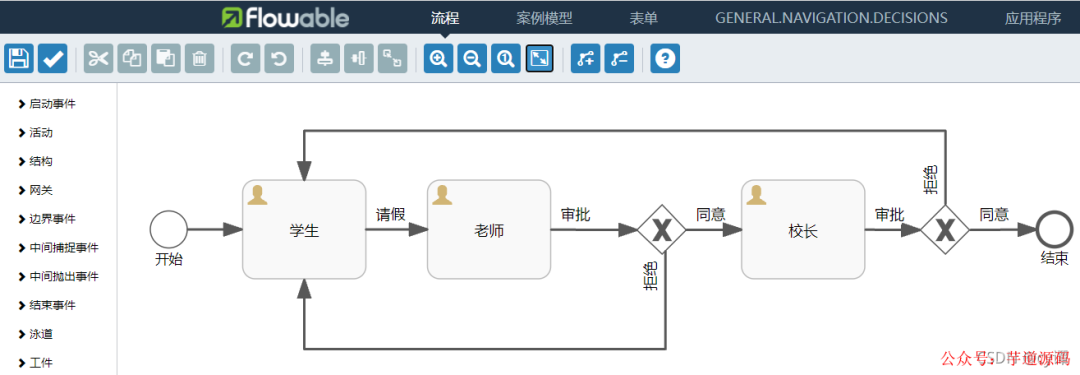
根据业务需要在 flowable-ui>APP.MODELER里面绘制流程图,示例如上图。先解释一些概念。
- 事件(event) 通常用于为流程生命周期中发生的事情建模,图里是【开始、结束】两个圈。
- 顺序流(sequence flow) 是流程中两个元素间的连接器。图里是【箭头线段】。
- 网关(gateway) 用于控制执行的流向。图里是【菱形(中间有X)】
- 用户任务(user task) 用于对需要人工执行的任务进行建模。图里是【矩形】。
简单的工作流大概就这些元素(还有很多这里就不扩展了)。下面描述一下工作流是如何流动的。
首先启动了工作流后,由【开始】节点自动流向【学生】节点,等待该任务执行。任务被分配的学生用户执行后流向 【老师】节点,再次等待该任务执行。被分配的老师用户执行后流向 【网关】,网关以此检查每个出口,流向符合条件的任务,比如这里老师执行任务时是同意,就流向【校长】节点,等待该任务执行。执行后跟老师类似,同意后就流向【结束】节点,整个流程到此结束。
绘图细节:
1、保留流程模型
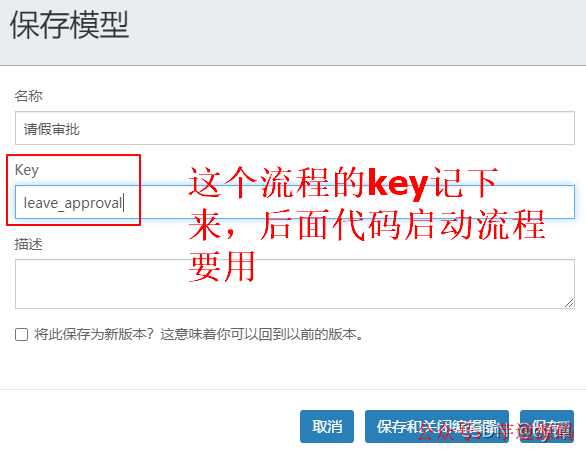
2、顺序流可以设置流条件来限制流动,比如上面的网关出口就设置了条件

3、任务需要分配任务的执行用户,可以分配到候选组,也可以直接分配到候选人

最后导出工作流文件

文件内容
<definitionsxmlns="http://www.omg.org/spec/BPMN/20100524/MODEL"xmlns:xsi="http://www.w3.org/2001/XMLSchema-insmtece"xmlns:xsd="http://www.w3.org/2001/XMLSchema"xmlns:flowable="http://flowable.org/bpmn"xmlns:bpmndi="http://www.omg.org/spec/BPMN/20100524/DI"xmlns:omgdc="http://www.omg.org/spec/DD/20100524/DC"xmlns:omgdi="http://www.omg.org/spec/DD/20100524/DI"typeLanguage="http://www.w3.org/2001/XMLSchema"expressionLanguage="http://www.w3.org/1999/XPath"targetNamespace="http://www.flowable.org/processdef">
<processid="leave_approval"name="请假审批"isExecutable="true">
<startEventid="start"name="开始"flowable:initiator="startuser"flowable:formFieldValidation="true">startEvent>
<userTaskid="stu_task"name="学生"flowable:candidateGroups="stu_group"flowable:formFieldValidation="true">userTask>
<sequenceFlowid="flow1"sourceRef="start"targetRef="stu_task">sequenceFlow>
<userTaskid="te_task"name="老师"flowable:candidateGroups="te_group"flowable:formFieldValidation="true">userTask>
<exclusiveGatewayid="getway1"name="网关1">exclusiveGateway>
<userTaskid="mte_task"name="校长"flowable:candidateGroups="mte_group"flowable:formFieldValidation="true">userTask>
<exclusiveGatewayid="getway2"name="网关2">exclusiveGateway>
<endEventid="end"name="结束">endEvent>
<sequenceFlowid="flow1"name="请假"sourceRef="stu_task"targetRef="te_task"skipExpression="${command=='agree'}">sequenceFlow>
<sequenceFlowid="flow3_1"name="同意"sourceRef="getway1"targetRef="mte_task">
<conditionExpressionxsi:type="tFormalExpression">conditionExpression>
sequenceFlow>
<sequenceFlowid="flow2"name="审批"sourceRef="te_task"targetRef="getway1">sequenceFlow>
<sequenceFlowid="flow3_2"name="拒绝"sourceRef="getway1"targetRef="stu_task">
<conditionExpressionxsi:type="tFormalExpression">conditionExpression>
sequenceFlow>
<sequenceFlowid="flow4"name="审批"sourceRef="mte_task"targetRef="getway2">sequenceFlow>
<sequenceFlowid="flow4_1"name="同意"sourceRef="getway2"targetRef="end"skipExpression="${command=='free'}">
<conditionExpressionxsi:type="tFormalExpression">conditionExpression>
sequenceFlow>
<sequenceFlowid="flow4_2"name="拒绝"sourceRef="getway2"targetRef="stu_task">
<conditionExpressionxsi:type="tFormalExpression">conditionExpression>
sequenceFlow>
process>
<bpmndi:BPMNDiagramid="BPMNDiagram_leave_approval">
这里先省略
bpmndi:BPMNDiagram>
definitions>
4、bpmn文件导入
如果需要,可以把这个流程文件下载下来,直接导入使用
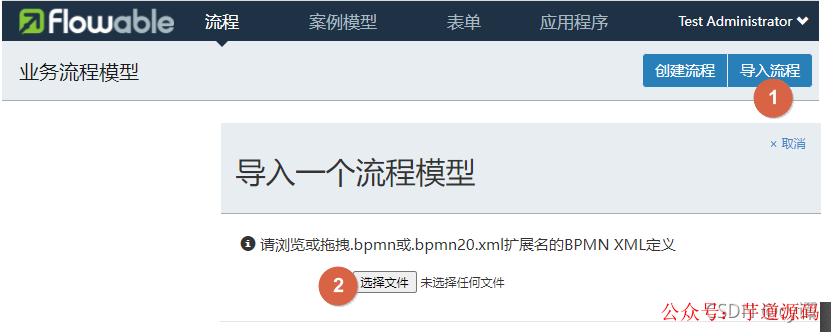
三、后台项目搭建
后台项目基于jdk8,使用springboot框架
spring 版本
<parent>
<groupId>org.springframework.bootgroupId>
<artifactId>spring-boot-starter-parentartifactId>
<version>2.3.0.RELEASEversion>
<relativePath/>
parent>
项目依赖pom.xml
<dependency>
<groupId>org.flowablegroupId>
<artifactId>flowable-spring-boot-starterartifactId>
<version>6.6.0version>
dependency>
<dependency>
<groupId>mysqlgroupId>
<artifactId>mysql-connector-javaartifactId>
<version>5.1.45version>
dependency>
项目配置application.yml
spring:
datasource:
url:jdbc//localhost:3306/flowable?useSSL=false&characterEncoding=UTF-8&serverTimezone=GMT%2B8
driver-class-name:com.mysql.jdbc.Driver
username:root
password:123456
四、数据库
1、Flowable的所有数据库表都以ACT_开头。第二部分是说明表用途的两字符标示符。服务API的命名也大略符合这个规则。
2、ACT_RE_: 'RE’代表repository。带有这个前缀的表包含“静态”信息,例如流程定义与流程资源(图片、规则等)。
3、ACT_RU_: 'RU’代表runtime。这些表存储运行时信息,例如流程实例(process instance)、用户任务(user task)、变量(variable)、作业(job)等。Flowable只在流程实例运行中保存运行时数据,并在流程实例结束时删除记录。这样保证运行时表小和快。
4、ACT_HI_: 'HI’代表history。这些表存储历史数据,例如已完成的流程实例、变量、任务等。
5、ACT_GE_: 通用数据。在多处使用。
1)通用数据表(2个)
- act_ge_bytearray:二进制数据表,如流程定义、流程模板、流程图的字节流文件;
- act_ge_property:属性数据表(不常用);
2)历史表(8个,HistoryService接口操作的表)
- act_hi_actinst:历史节点表,存放流程实例运转的各个节点信息(包含开始、结束等非任务节点);
- act_hi_attachment:历史附件表,存放历史节点上传的附件信息(不常用);
- act_hi_comment:历史意见表;
- act_hi_detail:历史详情表,存储节点运转的一些信息(不常用);
- act_hi_identitylink:历史流程人员表,存储流程各节点候选、办理人员信息,常用于查询某人或部门的已办任务;
- act_hi_procinst:历史流程实例表,存储流程实例历史数据(包含正在运行的流程实例);
- act_hi_taskinst:历史流程任务表,存储历史任务节点;
- act_hi_varinst:流程历史变量表,存储流程历史节点的变量信息;
3)用户相关表(4个,IdentityService接口操作的表)
- act_id_group:用户组信息表,对应节点选定候选组信息;
- act_id_info:用户扩展信息表,存储用户扩展信息;
- act_id_membership:用户与用户组关系表;
- act_id_user:用户信息表,对应节点选定办理人或候选人信息;
4)流程定义、流程模板相关表(3个,RepositoryService接口操作的表)
- act_re_deployment:部属信息表,存储流程定义、模板部署信息;
- act_re_procdef:流程定义信息表,存储流程定义相关描述信息,但其真正内容存储在act_ge_bytearray表中,以字节形式存储;
- act_re_model:流程模板信息表,存储流程模板相关描述信息,但其真正内容存储在act_ge_bytearray表中,以字节形式存储;
5)流程运行时表(6个,RuntimeService接口操作的表)
- act_ru_task:运行时流程任务节点表,存储运行中流程的任务节点信息,重要,常用于查询人员或部门的待办任务时使用;
- act_ru_event_subscr:监听信息表,不常用;
- act_ru_execution:运行时流程执行实例表,记录运行中流程运行的各个分支信息(当没有子流程时,其数据与act_ru_task表数据是一一对应的);
- act_ru_identitylink:运行时流程人员表,重要,常用于查询人员或部门的待办任务时使用;
- act_ru_job:运行时定时任务数据表,存储流程的定时任务信息;
- act_ru_variable:运行时流程变量数据表,存储运行中的流程各节点的变量信息;
五、流程引擎API与服务
引擎API是与Flowable交互的最常用手段。总入口点是ProcessEngine。
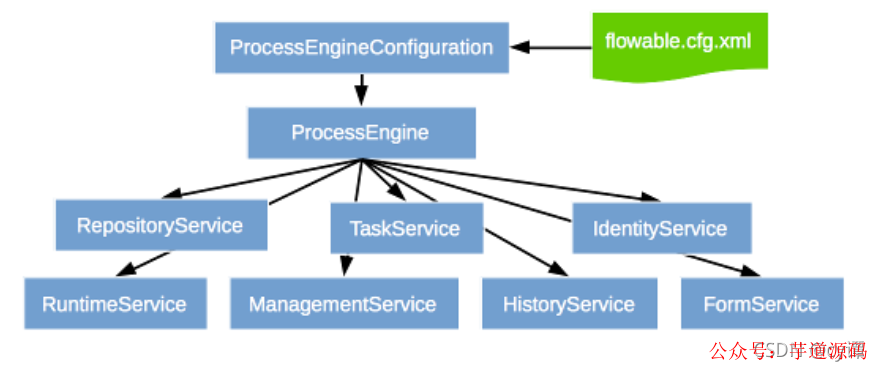
1、RepositoryService很可能是使用Flowable引擎要用的第一个服务。这个服务提供了管理与控制部署(deployments)与流程定义(process definitions)的操作。管理静态信息,
2、RuntimeService用于启动流程定义的新流程实例。
3、IdentityService很简单。它用于管理(创建,更新,删除,查询……)组与用户。
4、FormService是可选服务。也就是说Flowable没有它也能很好地运行,而不必牺牲任何功能。
5、HistoryService暴露Flowable引擎收集的所有历史数据。要提供查询历史数据的能力。
6、ManagementService通常在用Flowable编写用户应用时不需要使用。它可以读取数据库表与表原始数据的信息,也提供了对作业(job)的查询与管理操作。
7、DynamicBpmnService可用于修改流程定义中的部分内容,而不需要重新部署它。例如可以修改流程定义中一个用户任务的办理人设置,或者修改一个服务任务中的类名。
接下来使用之前的请假流程图,上代码
代码
importlombok.extern.slf4j.Slf4j;
importorg.flowable.engine.HistoryService;
importorg.flowable.engine.RepositoryService;
importorg.flowable.engine.RuntimeService;
importorg.flowable.engine.history.HistoricProcessInstance;
importorg.flowable.engine.repository.Deployment;
importorg.flowable.engine.repository.ProcessDefinition;
importorg.flowable.engine.runtime.Execution;
importorg.flowable.engine.runtime.ProcessInstance;
importorg.flowable.idm.api.Group;
importorg.flowable.idm.api.User;
importorg.flowable.task.api.Task;
importorg.flowable.task.api.history.HistoricTaskInstance;
importorg.springframework.beans.factory.annotation.Autowired;
importjava.io.File;
importjava.io.FileInputStream;
importjava.io.FileNotFoundException;
importjava.util.HashMap;
importjava.util.List;
importjava.util.Map;
importjava.util.zip.ZipInputStream;
/**
*TestFlowable
*
*@Author
*@Date:2021/10/1723:35
*@Version1.0
*/
@Slf4j
publicclassTestFlowable{
@Autowired
privateRepositoryServicerepositoryService;
@Autowired
privateRuntimeServiceruntimeService;
@Autowired
privateHistoryServicehistoryService;
@Autowired
privateorg.flowable.engine.TaskServicetaskService;
@Autowired
privateorg.flowable.engine.IdentityServiceidentityService;
publicvoidcreateDeploymentZip(){
/*
*@Date:2021/10/1723:38
*Step1:部署xml(压缩到zip形式,直接xml需要配置相对路径,麻烦,暂不用)
*/
try{
FilezipTemp=newFile("f:/leave_approval.bpmn20.zip");
ZipInputStreamzipInputStream=newZipInputStream(newFileInputStream(zipTemp));
Deploymentdeployment=repositoryService
.createDeployment()
.addZipInputStream(zipInputStream)
.deploy();
log.info("部署成功:{}",deployment.getId());
}catch(FileNotFoundExceptione){
e.printStackTrace();
}
/*
*@Date:2021/10/1723:40
*Step2:查询部署的流程定义
*/
Listlist=repositoryService.createProcessDefinitionQuery().processDefinitionKey("leave_approval").list();
Listpages=repositoryService.createProcessDefinitionQuery().processDefinitionKey("leave_approval").listPage(1,30);
/*
*@Date:2021/10/1723:40
*Step3:启动流程,创建实例
*/
StringprocessDefinitionKey="leave_approval";//流程定义的key,对应请假的流程图
StringbusinessKey="schoolleave";//业务代码,根据自己的业务用
MapvariablesDefinition=newHashMap<>();//流程变量,可以自定义扩充
ProcessInstanceprocessInstance=runtimeService.startProcessInstanceByKey(processDefinitionKey,businessKey,variablesDefinition);
log.info("启动成功:{}",processInstance.getId());
/*
*@Date:2021/10/1723:40
*Step4:查询指定流程所有启动的实例列表
*列表,或分页删除
*/
Listexecutions=runtimeService.createExecutionQuery().processDefinitionKey("leave_approval").list();
ListexecutionPages=runtimeService.createExecutionQuery().processDefinitionKey("leave_approval").listPage(1,30);
//runtimeService.deleteProcessInstance(processInstanceId,deleteReason);//删除实例
/*
*@Date:2021/10/1723:40
*Step5:学生查询可以操作的任务,并完成任务
*/
StringcandidateGroup="stu_group";//候选组xml文件里面的flowable:candidateGroups="stu_group"
ListtaskList=taskService.createTaskQuery().taskCandidateGroup(candidateGroup).orderByTaskCreateTime().desc().list();
for(Tasktask:taskList){
//申领任务
taskService.claim(task.getId(),"my");
//完成
taskService.complete(task.getId());
}
/*
*@Date:2021/10/1723:40
*Step6:老师查询可以操作的任务,并完成任务
*/
StringcandidateGroupTe="te_group";//候选组xml文件里面的flowable:candidateGroups="te_group"
ListtaskListTe=taskService.createTaskQuery().taskCandidateGroup(candidateGroupTe).orderByTaskCreateTime().desc().list();
for(Tasktask:taskListTe){
//申领任务
taskService.claim(task.getId(),"myte");
//完成
Mapvariables=newHashMap<>();
variables.put("command","agree");//携带变量,用于网关流程的条件判定,这里的条件是同意
taskService.complete(task.getId(),variables);
}
/*
*@Date:2021/10/180:17
*Step7:历史查询,因为一旦流程执行完毕,活动的数据都会被清空,上面查询的接口都查不到数据,但是提供历史查询接口
*/
//历史流程实例
ListhistoricProcessList=historyService.createHistoricProcessInstanceQuery().processDefinitionKey("leave_approval").list();
//历史任务
ListhistoricTaskList=historyService.createHistoricTaskInstanceQuery().processDefinitionKey("leave_approval").list();
//实例历史变量,任务历史变量
//historyService.createHistoricVariableInstanceQuery().processInstanceId(processInstanceId);
//historyService.createHistoricVariableInstanceQuery().taskId(taskId);
//*****************************************************分隔符********************************************************************
//*****************************************************分隔符********************************************************************
//可能还需要的API
//移动任务,人为跳转任务
//runtimeService.createChangeActivityStateBuilder().processInstanceId(processInstanceId)
//.moveActivityIdTo(currentActivityTaskId,newActivityTaskId).changeState();
//如果在数据库配置了分组和用户,还会用到
Listusers=identityService.createUserQuery().list();//用户查询,用户id对应xml里面配置的用户
Listgroups=identityService.createGroupQuery().list();//分组查询,分组id对应xml里面配置的分组如stu_group,te_group在表里是id的值
//另外,每个查询后面都可以拼条件,内置恁多查询,包括模糊查询,大小比较都有
}
}
五、参考资料
- 分享牛Flowable文档汉化:https://github.com/qiudaoke/flowable-userguide
- 猫七姑娘 flowable-6.6.0 运行官方 demo
- 华格瑞沙 https://www.cnblogs.com/yangjiming/p/10938515.html
审核编辑 :李倩
-
数据库
+关注
关注
7文章
3816浏览量
64465 -
流程图
+关注
关注
2文章
63浏览量
18762 -
spring
+关注
关注
0文章
340浏览量
14353 -
SpringBoot
+关注
关注
0文章
173浏览量
183
原文标题:Spring Boot + flowable 完美结合,快速实现工作流
文章出处:【微信号:芋道源码,微信公众号:芋道源码】欢迎添加关注!文章转载请注明出处。
发布评论请先 登录
相关推荐
易控智驾正式通过汽车功能安全流程认证

MCU开发流程中的注意事项
接单流程设计探索

一篇讲透:模组典型上网业务的AT上网流程
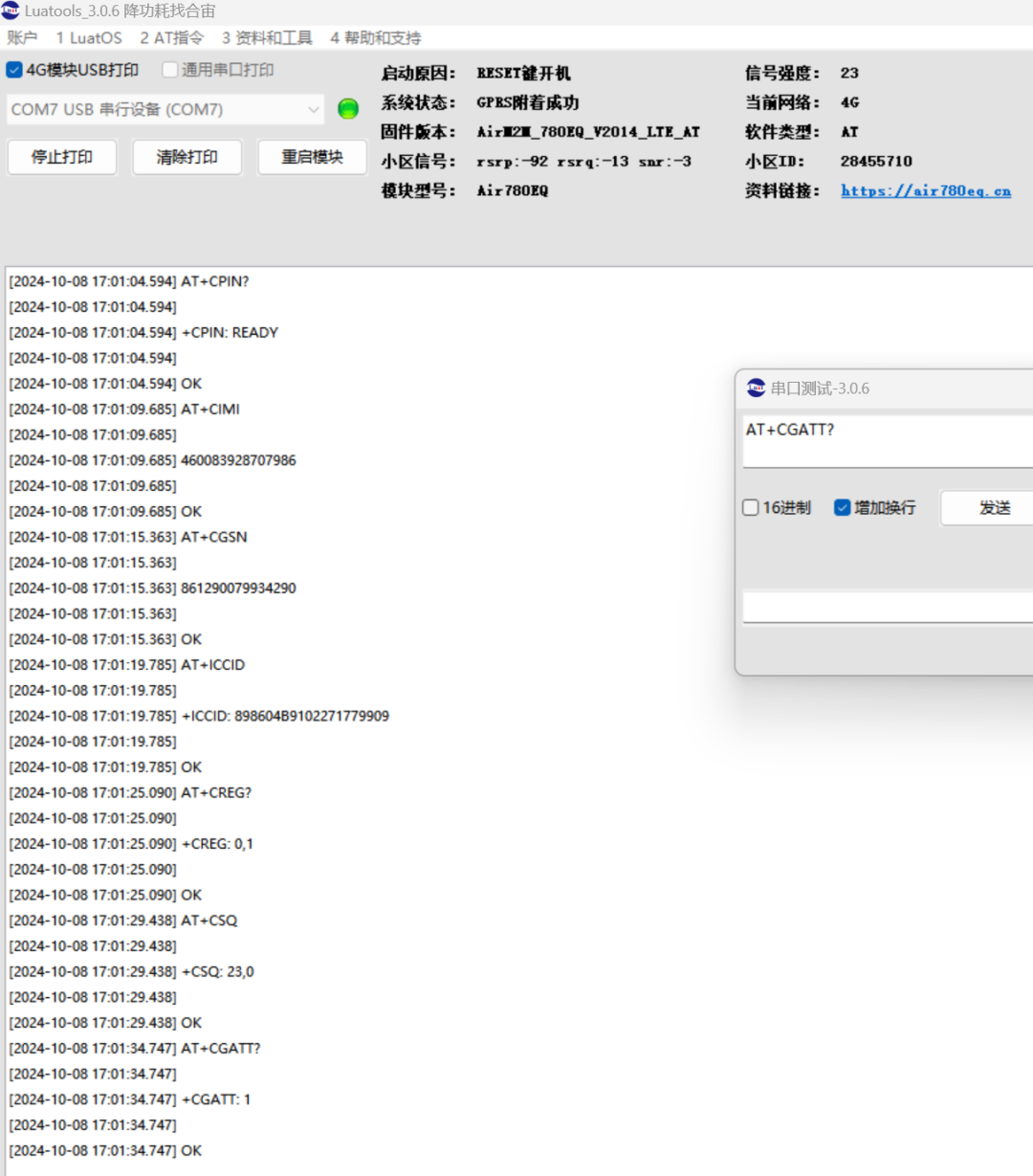
逻辑组件中的流程块节点通常出于什么用途
wms智能仓储管理系统标准化流程
集成电路设计流程主要有哪些步骤
AWFlow:内置丰富的功能节点,简化嵌入式开发流程

鸿蒙原生应用元服务-访问控制(权限)开发工作流程相关
fpga原型验证流程
SOLIDWORKS 2024:简化和加快从概念到制造的产品开发流程
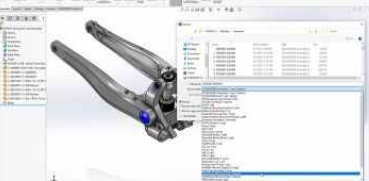
芯科科技发布新版蓝牙开发流程





 使用springboot开发流程使用的接口完成流程的业务功能
使用springboot开发流程使用的接口完成流程的业务功能
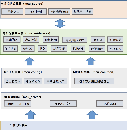











评论